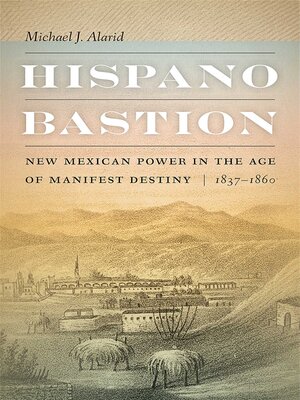Hispano Bastion
ebook ∣ New Mexican Power in the Age of Manifest Destiny, 1837-1860
By Michael J. Alarid

Sign up to save your library
With an OverDrive account, you can save your favorite libraries for at-a-glance information about availability. Find out more about OverDrive accounts.
Find this title in Libby, the library reading app by OverDrive.



Search for a digital library with this title
Title found at these libraries:
| Library Name | Distance |
|---|---|
| Loading... |
In this groundbreaking study, historian Michael J. Alarid examines New Mexico's transition from Spanish to Mexican to US control during the nineteenth century and illuminates how emerging class differences played a crucial role in the regime change. After Mexico won independence from Spain in 1821, trade between Mexico and the United States attracted wealthy Hispanos into a new market economy and increased trade along El Camino Real, turning it into a burgeoning exchange route. As landowning Hispanos benefited from the Santa Fe trade, traditional relationships between wealthy and poor Nuevomexicanos—whom Alarid calls patrónes and vecinos—started to shift. Far from being displaced by US colonialism, wealthy Nuevomexicanos often worked in concert with new American officials after US troops marched into New Mexico in 1846, and in the process, Alarid argues, the patrónes abandoned their customary obligations to vecinos, who were now evolving into a working class. Ultimately wealthy Nuevomexicanos, the book argues, succeeded in preserving New Mexico as a Hispano bastion, but they did so at the expense of poor vecinos.







